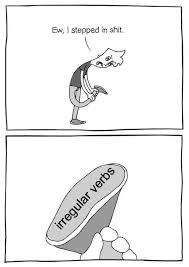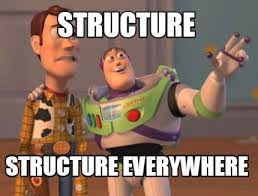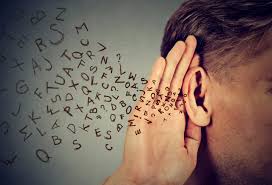Learn Dutch Online
Hints and tips for learning Dutch and Flemish
How to Remember the Dutch Irregular Verbs in the Past Tense
Published: 11/28/2019
Just like in many languages, there are irregular and defective verbs in Dutch. Although there are only six completely irregular verbs in the present tense, in the past tense there are hundreds.*
Since you are reading this post, you were probably recently confronted with a nice list of all those verbs. While looking at the list and counting the number of pages, you might have told yourself something like:
"How on earth am I ever going to remember these?!"
Before the cold sweats break out and you feel the deep inner urge to completely give up on the Dutch language, read this post! Here are some tips we at Learn Dutch Online give to our students when we confront them with the irregular verbs in the past tense:

1. There is secretly a little bit of structure.

Although these are not set rules, and they don't count for all the verbs, there are some verbs that do show a bit of structure. Here are a few regularities among the irregular verbs:
- ‘ui’ → ‘oo’: For example: duiken (to dive) becomes ik dook (simple past) and ik heb gedoken (past participle).
- ‘ij’ → ‘ee’: For example: kijken (to look) becomes ik keek (simple past) and ik heb gekeken (past participle).
- ‘i’ or ‘ie’ → ‘o’ or ‘oo’: For example: beginnen (to begin) becomes ik begon (simple past) and ik ben begonnen (past participle). Bieden (to offer) becomes ik bood and ik heb geboden.
Under no circumstance should you look at the above as set grammar rules, but rather as guidelines to help you with most of the verbs in their irregular forms. To give you an idea: the verb bidden (to pray) becomes ik bad (past simple), ik heb gebeden (past participle), so the above guideline will not help you here, but will help you for many other verbs with ‘i’ or ‘ie’.
It's best to go over a text with a marker and highlight the verbs that do use these guidelines.
2. First start with verbs you use often.

First of all, it is important to always use or work with the verbs in a context. Learning a list by heart helps you for 2 weeks max. If you work from a context, in the long term you will remember them easier and for longer.
Since you have your set of highlighters with you now, start with highlighting the verbs you use frequently and are most familiar with. If you are a gardener, construction worker or an undertaker, you will use the verb graven (to dig) most frequently. An IT specialist will more frequently use the verb opslaan (to save), and a doctor is more familiar with the past forms of genezen (to heal).
3. Every day a few sentences.

Once you have established your priority list of past tense verbs which you gathered from articles, texts, books, social media posts, etc., it is time to start making their use automatic in your speech. Here are a few tips for automation:
For auditory learners:
- Choose 10 verbs from your list, make sentences with them, and record yourself while reciting the sentences clearly. Listen to the recording daily while commuting or doing simple tasks.
- Every week, move on to the next 10 verbs until you’ve worked through your full list.
- Watch Dutch TV or listen to Dutch radio and try to identify past tense verbs as you hear them.
For visual learners:
- Write your list three times in large, bold letters. Post them in places where you spend time not mentally engaged (e.g. bathroom, bedside table, near the coffee machine).
- Make 10 sentences a day using the verbs from the list.
- Highlight past tense verbs while reading newspapers or books, and track which verbs appear most often to determine priority.
4. Test your knowledge with a native speaker.
Once you’ve practiced enough, try using the verbs in real conversations with a native speaker — your trainer, a colleague, a neighbor or anyone you're comfortable with.
Instead of switching to another language or freezing up, try different forms of the verb until you get it right. Most people will be happy to correct you if you ask.
Native: "Wat heb je gisteren gedaan?"
You: "We zwemmen, zwommen, zwammen... in het zwembad?"
Native: "Zwommen."
You: "Aha, dank je. We aten, oat, oot... een ijsje?"
Native: "Aten! Wat leuk, welke smaak heb je gegeten?"
You: "Aah, ik at een vanille-ijsje!"
Without interrupting the conversation or switching languages, you get to practice your verbs in a natural, engaging way — just like a native.
Would you like to learn more about the Dutch language and become more confident using verbs? Subscribe to our Beginners course now! After a free introduction session you will learn in a fun and affordable way with your personal trainer.
*For those that already struggle with the English tenses, here is a short explanation of the grammatical terms used in this blog post:
- Present tense infinitive form: to speak → Today I speak to my trainer.
- Simple past: I spoke → Yesterday I spoke to my trainer.
- Past participle: I have spoken → Yesterday I have spoken to my trainer.

